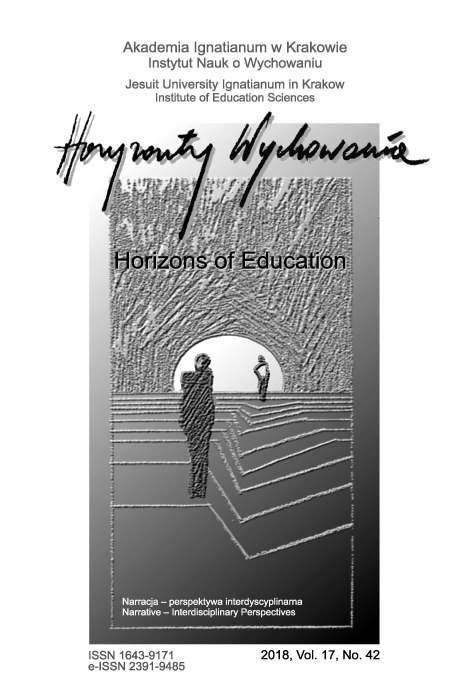The Evolution of Political Narratives in the Digital Age in the United States of America
Abstrakt
RESEARCH OBJECTIVE: The objective of this essay is to demonstrate how political narratives in the United States of America, specifically, Presidential campaign advertisements, have addressed the problem of audience.
THE RESEARCH PROBLEM AND METHODS: Through historical and critical analysis/research the essay traces the concept of presence, i.e. foregrounding information favorable to the candidate without incurring opposition, and, foregrounding information that addresses each voter’s specific issues.
THE PROCESS OF ARGUMENTATION: The essay begins by reviewing the origins of the “reasonable man” assumption of audience in contested rituals in a democracy. It then applies that historic standard to modern American Presidential campaigns beginning with the oratorical period (circa 1896) and continuing through the periods dominated by radio (1925-1950) and television (1960-2004). The essay argues that the problem of presence was never resolved in these periods.
RESEARCH RESULTS: The essay demonstrates how Big Data and the use of that data for psychographic analysis (in addition to the traditional demographic analysis) solves the problem of presence by allowing candidates to micro-target narratives to individuals and their specific interests.
CONCLUSIONS, INNOVATIONS AND RECOMMENDATIONS: The essay concludes with a cautionary note about the trend toward “self-assent,” and the societal danger its poses for purging political narratives of their “contested” value to a democracy.
Bibliografia
Caplan, H., trans. Ad Herennium, [Cicero]. (1968). Cambridge: Harvard University Press.
Hasson, D. (n.d.). Mass Mailings Turn to Micro‑Targeting. Winning Campaigns. Retrieved from:
Campaigns‑Archive‑Articles/Mass‑Mailing‑Turns‑to‑Micro‑Targeting.html (access: 01.06.2018).
Jamieson, K. (1996). Packaging the Presidency. New York: Oxford University Press.
Jamieson, K. (2005). Electing the President, 2004: The Insider’s View. Philadelphia: University of Pennsylvania Press.
Kenski, K. (2006). Design Concepts for the Rolling Cross‑Section Approach. Capturing Campaign Dynamics 2000 & 2004. Philadelphia: University of Pennsylvania Press.
Miller, C.C. (2008, November 7). How Obama’s Internet Campaign Changed Politics. The New York Times. Retrieved from: https://bits.blogs.nytimes.com/2008/11/07 (access: 01.06.2018).
Nix, A. (2016) The Power of Big Data and Psychographics [Video file]. Retrieved from: https://www.youtube.com/watch?v=CgYvf3Ckdso (access: 01.06.2016).
Parscale, B. (2017, October 8). Facebook “embeds” Russia and the Trump campaign’s secret weapon [Video file]. Retrieved from: https://www.CBSnews.co/news/facebook‑embeds‑russia (access: 01.06.2016).
Perelman, C. & Olbrechts‑Tyteca, L. (1969). The New Rhetoric. South Bend, IN: University of Notre Dame Press.
West, D. (2005). Air Wars, 4th ed. Washington, D.C.: CQ Press.
Copyright (c) 2018 Richard A. Katula

Utwór dostępny jest na licencji Creative Commons Uznanie autorstwa – Bez utworów zależnych 4.0 Międzynarodowe.
Uwagi dotyczące praw autorskich
Autorzy publikujący w tym czasopiśmie wyrażają zgodę na następując warunki:
- Autorzy zachowują prawa autorskie, przyznając czasopismu prawo do pierwszej publikacji swojego tekstu jednocześnie zarejestrowanego pod numerem licencji CC BY-ND, która pozwala innym na korzystanie z tego tekstu z uznaniem autorstwa tekstu oraz pierwotnej publikacji w tym czasopiśmie.
- Autorzy proszeni są o nawiązywanie odrębnych, dodatkowych porozumień wynikających z umowy, dotyczących dystrybucji opublikowanej w czasopiśmie wersji tekstu nie na prawach wyłączności (np. opublikowanie go w repozytorium instytucji lub w innym czasopiśmie), z potwierdzeniem pierwszej publikacji w tym czasopiśmie.
Wyraża się zgodę i zachęca autorów do publikacji ich tekstu w Internecie (np. w repozytorium instytucji lub na jej stronie internetowej) przed lub podczas procesu składania tekstu jako, że może to prowadzić do korzystnych wymian oraz wcześniejszego i większego cytowania opublikowanego tekstu (Patrz The Effect of Open Access). Zalecamy wykorzystanie dowolnego portalu stowarzyszeń badawczych z niżej wymienionych:






